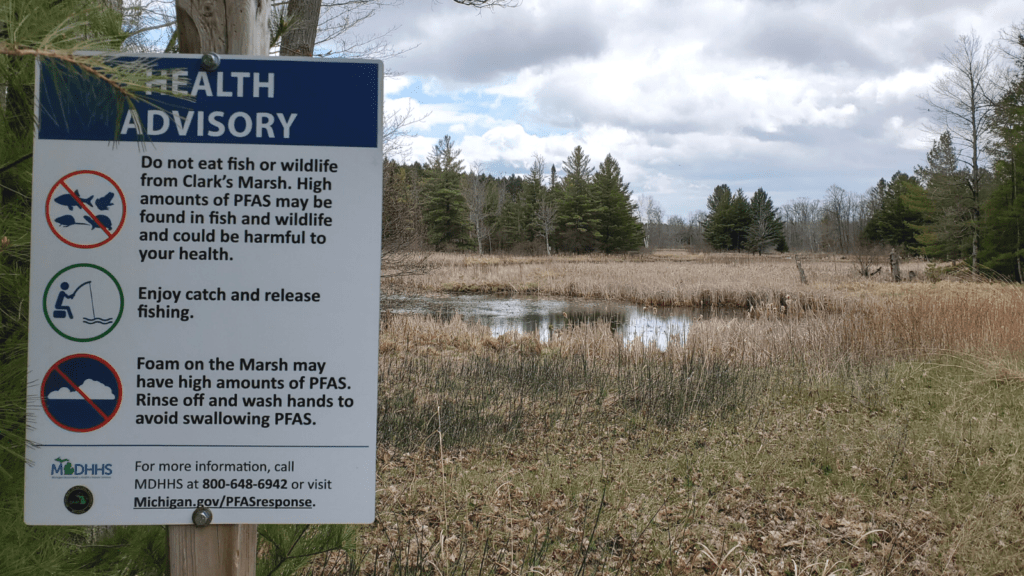Protecting People from Toxic Fish in Illinois
ILLINOIS PORTION OF THE LAKE MICHIGAN BASIN
Analysis of fish from Lake Michigan for toxic PFOS will aid in more accurate fish consumption advisories, protecting human health.
Increased attention is being paid to PFAS—a class of toxic forever chemicals—that are linked to serious health impacts, including cancer, increased cholesterol levels, increased risk for thyroid disease, low infant birth weights, reduced response to vaccines, liver and kidney toxicity, and pregnancy- induced hypertension.
In June of 2022, the EPA announced there is effectively no safe exposure to one specific PFAS chemical, Perflurooctane Sulfonate, commonly known as PFOS. PFOS contamination primarily comes from factories that manufactured or used the chemicals and locations where they were used as firefighting foams, such as airports and military bases. The chemicals are also abundant in everyday objects, because they’re used to make items non-stick, such as in kitchenware, or water-, oil-, or stain-resistant, in clothing and food wrapping, for example.
In late 2022, a study published in the Environmental Research Journal found that toxic PFAS chemicals are widely detected in freshwater fish across the U.S., and consuming a single fish from the Great Lakes is equivalent to drinking a month’s worth of water contaminated with high levels of PFAS. This is particularly concerning for people who rely on fish for a significant portion of their diet, such as Indigenous Peoples, some immigrant populations, and low-income communities.
Because PFOS bind to fish tissue and can’t be cooked or trimmed out, fish consumption advisories are the only way to inform people about possible dangers and to keep people safe from PFOS contamination in fish. With grant funding from the Great Lakes Restoration Initiative (GLRI), the Illinois Environmental Protection Agency (IEPA) will be able to purchase lab equipment to examine fish tissue samples from Lake Michigan for PFOS concentration. The IEPA will compare results to the Great Lakes Consortium for Fish Consumption Advisories’ PFOS Guidelines, posting fish consumption advisories, as needed. The project also includes an outreach and engagement element, with the IEPA planning to inform consumers of the risks and benefits associated with consuming fish taken from the sampled areas of Lake Michigan.
Resource Challenges Addressed
Tracking of fish contamination
Safeguarding human health
Issuing more accurate fish consumption advisories
Key Partners
U.S. EPA, Illinois EPA, Illinois Department of Agriculture, Illinois Department of Natural Resources, Illinois Department of Public Health
Cost
$350,000
Results and Accomplishments
The analysis of fish tissue for toxic PFOS contamination will allow the Illinois EPA to provide anglers with more accurate fish consumption advisories, warning them of potential danger, and helping to keep communities safe from these toxic chemicals.
*This story is part of a GLRI success story packet that was used in the Coalition’s 2023 Great Lakes Days, with one story from each state in the region. Read the full packet
FISH CONSUMPTION ADVISORIES
With lab equipment purchased with GLRI funds, the Illinois EPA will be better prepared to analyze fish tissue from Lake Michigan and post fish consumption advisories, as needed. The photo above shows one such advisory in Michigan due to PFAS contamination.
Credit: Jennifer Hill

